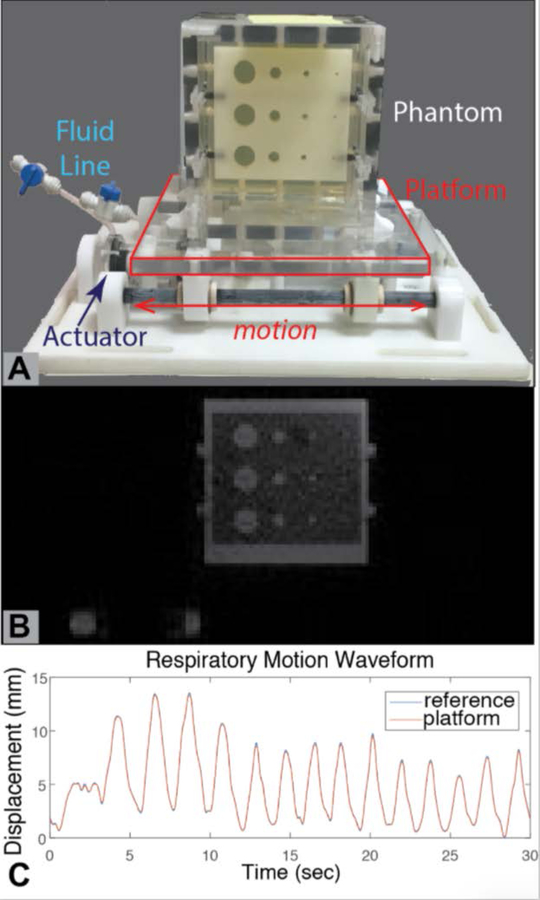Figure 5:
A programmable motion phantom for quantitative assessment of dynamic and interventional MRI (79). (A) The motion platform is actuated by a pair of master-slave hydrostatic actuators (slave actuator shown in photo). The slave and master actuators are connected by a fluid-filled line, with the master actuator positioned outside of the MRI scanner room and connected to a computer-controlled motor. The gel-filled phantom contains a plate with geometric features of known dimensions for assessment of dynamic MRI sequences. These features can also serve as targets for MRI-guided targeted device placement. The platform and phantom are constructed using plastic materials. (B) A representative real-time gradient echo MRI frame depicting the phantom and its geometric features. Note that the fluid (water) in the actuator is also visible. (C) By using a learning-based algorithm, the motion platform is programmed to accurately and repeatably generate motion as specified by a reference input waveform. In this example, the reference input was an actual respiratory waveform pre-recorded from a human subject.

